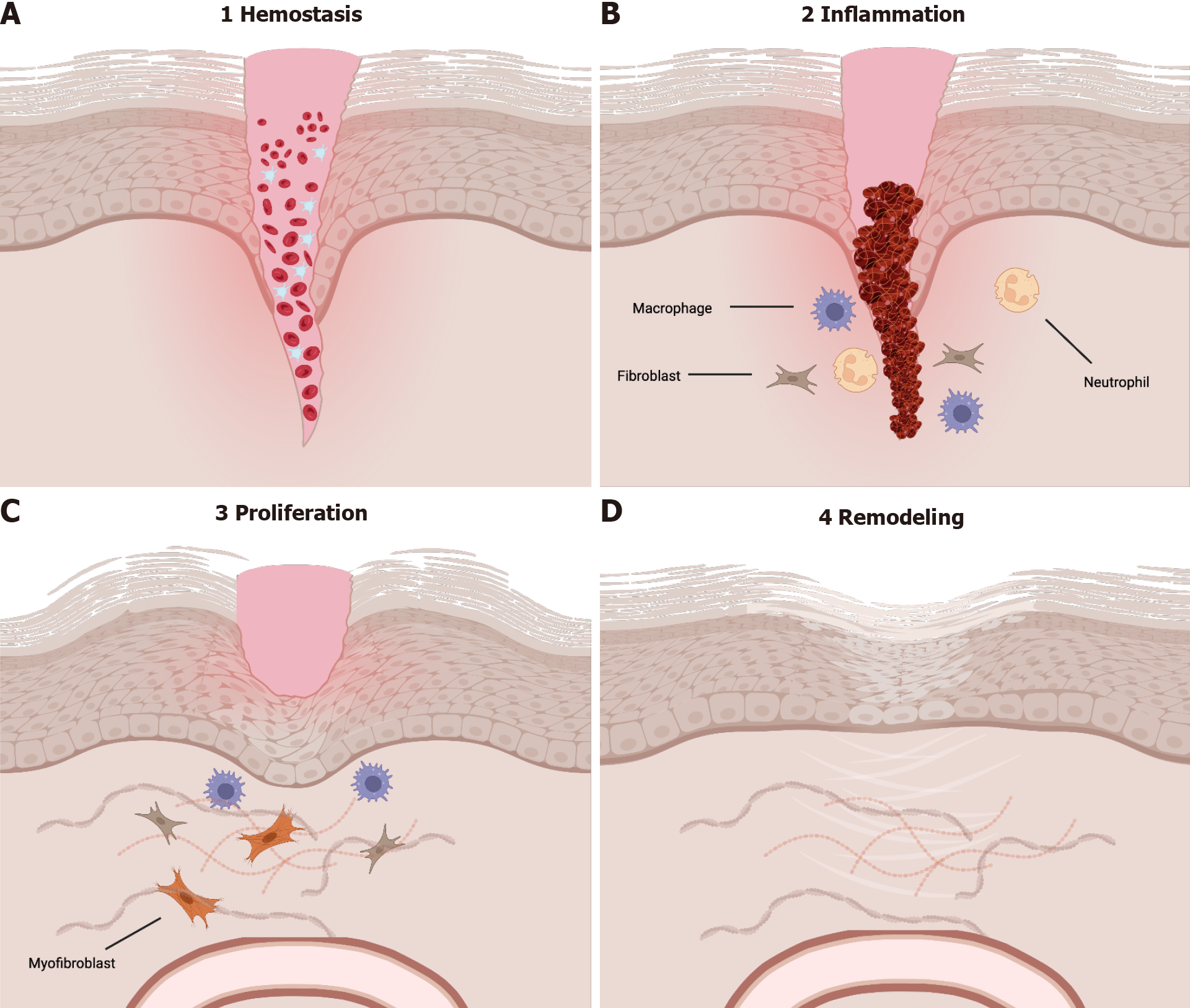Copyright
©The Author(s) 2024.
World J Exp Med. Mar 20, 2024; 14(1): 86898
Published online Mar 20, 2024. doi: 10.5493/wjem.v14.i1.86898
Published online Mar 20, 2024. doi: 10.5493/wjem.v14.i1.86898
Figure 1 The four phases of wound healing.
Wound healing is divided into 4 distinct phases that have overlap. A: Hemostasis, B: Inflammation, C: Proliferation, D: Remodeling. Cell-to-cell interactions mediated by both cytokines and chemokines are imperative for the transitions between phases. During hemostasis, platelets and fibrin function to form a plug to stop bleeding. Hemostasis is followed by the inflammatory phase which is characterized by release of cytokines, most notably from macrophages, that are imperative for induction of the proliferative phase. During proliferation, the body is focused on neovascularization and re-epithelialization of the wound surface. The final phase, remodeling, takes place over months to years and is currently not well characterized. Produced using BioRender.com.
- Citation: Cotterell A, Griffin M, Downer MA, Parker JB, Wan D, Longaker MT. Understanding wound healing in obesity. World J Exp Med 2024; 14(1): 86898
- URL: https://www.wjgnet.com/2220-315x/full/v14/i1/86898.htm
- DOI: https://dx.doi.org/10.5493/wjem.v14.i1.86898









